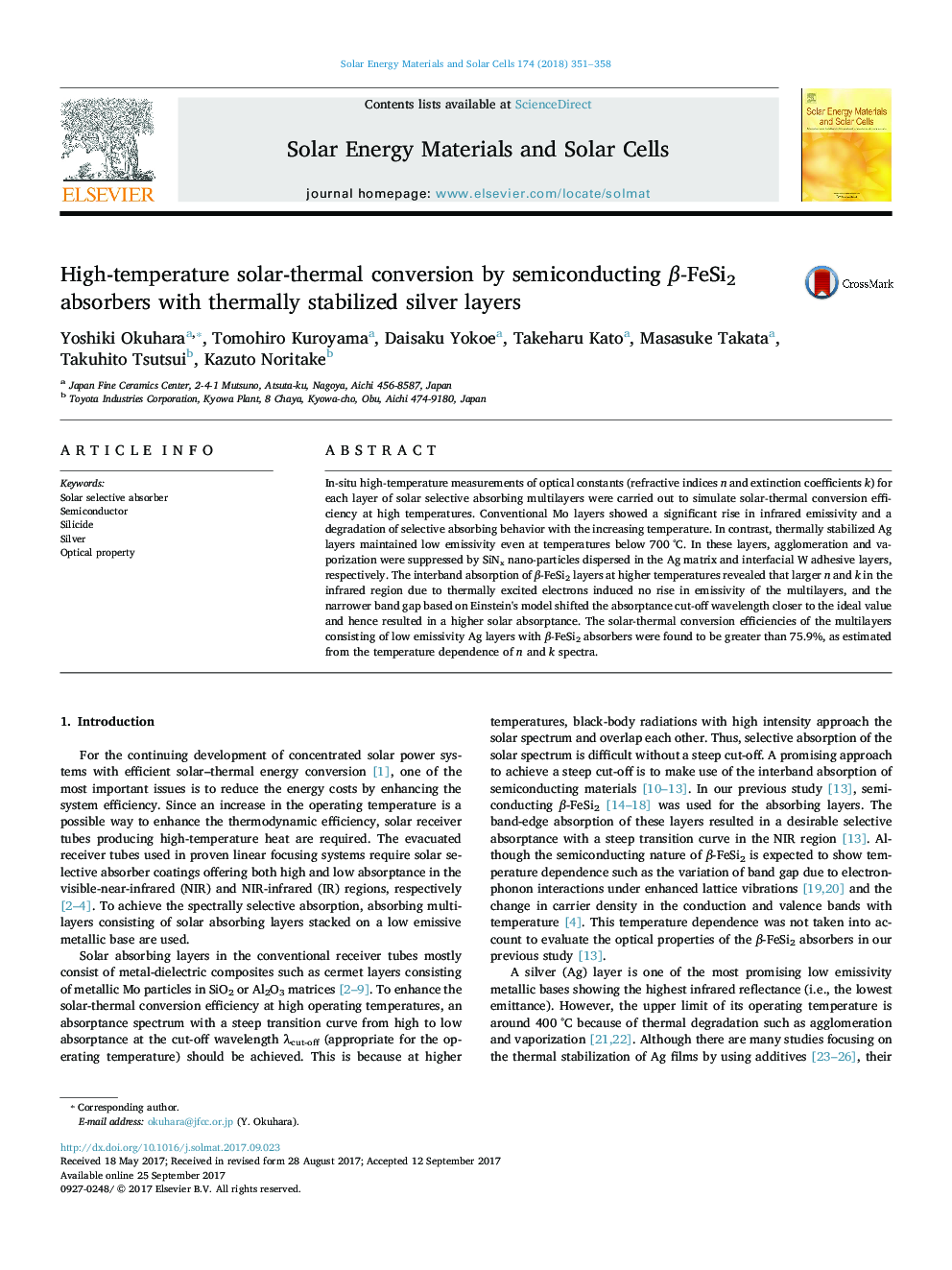| Article ID | Journal | Published Year | Pages | File Type |
|---|---|---|---|---|
| 6456691 | Solar Energy Materials and Solar Cells | 2018 | 8 Pages |
â¢The n and k spectra at high temperature were needed for actual efficiencies.â¢High temperature efficient solar-thermal conversion by β-FeSi2 on a Ag base.â¢High efficiency originates from a steep cut-off at the band-edge absorption.â¢Low emissivity originates from thermally stabilized Ag base.â¢Thermally stable Ag layer contained SiNx additives and W layers.
In-situ high-temperature measurements of optical constants (refractive indices n and extinction coefficients k) for each layer of solar selective absorbing multilayers were carried out to simulate solar-thermal conversion efficiency at high temperatures. Conventional Mo layers showed a significant rise in infrared emissivity and a degradation of selective absorbing behavior with the increasing temperature. In contrast, thermally stabilized Ag layers maintained low emissivity even at temperatures below 700 °C. In these layers, agglomeration and vaporization were suppressed by SiNx nano-particles dispersed in the Ag matrix and interfacial W adhesive layers, respectively. The interband absorption of β-FeSi2 layers at higher temperatures revealed that larger n and k in the infrared region due to thermally excited electrons induced no rise in emissivity of the multilayers, and the narrower band gap based on Einstein's model shifted the absorptance cut-off wavelength closer to the ideal value and hence resulted in a higher solar absorptance. The solar-thermal conversion efficiencies of the multilayers consisting of low emissivity Ag layers with β-FeSi2 absorbers were found to be greater than 75.9%, as estimated from the temperature dependence of n and k spectra.
Graphical abstractDownload high-res image (149KB)Download full-size image
